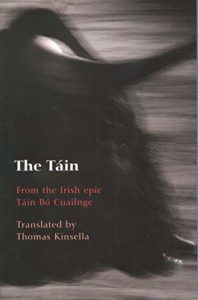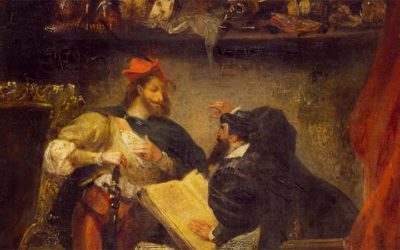About a year ago, I posted a review on Amazon of Kinsella’s; The Táin Bó Cuailnge. And it just happens to be a perfect fit with the overall theme/objective of this site. Needless to say, the aforementioned work also plays into or resonates favorably with my forthcoming novel; Beyond the Pillars of Hercules, so that’s why I’m now including it here as well.

Without further ado, here’s the review as it first appeared but with the slight addition of some new/expanded material.
First of all, Thomas Kinsella has to be celebrated and acknowledged for his painstaking work and contribution to the Irish epic poem—The Táin Bó Cuailnge. His research and dedication to said work; was no easy feat by any stretch of the imagination.
The story/concept itself seemed simple enough and even faintly familiar to anyone who’s ever read a great deal of mythology (Greek or otherwise).
The central thesis of the story revolved around the heroic exploits of a revered demi-god (in other words; an adept/initiate of the supersensible world), one Cú Chulainn; and his fabulous quest for adventure (knowledge/initiation).
BTW: This myth is not only similar to the one of Hercules/Heracles, the biblical Samson and so on but equally resonates (between the lines) in the latter Arthurian and Grail legends of the Middle Ages. And to some degree, even Cervantes’ own 17th century masterpiece; Don Quixote de la Mancha, could be added to the mix.
But the most important thing to remember here, and this applies to all of the related stories/traditions, in their own way; they were ingeniously and covertly alluding to the spiritual initiation of the human being and in learning to decipher the supersensible forces behind nature and the physical world, plain and simple.
Now, my own reason for wanting to educate myself about this all-significant tale of ancient Irish folkloric history was harmless enough. I have always suspected that there was a missing link or connection of this myth to the one of Hercules and as I have already made clear; other similar allegorical stories/mysteries of the ancient past.
Now, what these oral traditions/histories (which were eventually transcribed and written down and recorded for posterity) have in common with one another, along with the civilizations from whence they originated; was their original place of origin—Atlantis.
Yes, you read that right!
It is my firm belief that the aboriginal people of Ireland (as well as the peoples of the British Isles) were the direct descendants of Atlantis and are therefore one of the oldest civilizations in the world.
I say this with a sense of conviction (albeit, a very intuitive one at that) because their very own history/mythology can attest to that very premise (that they are descended from a divine race).
Yes, I know and am aware that lots of other ancient peoples/cultures had made similar claims of divine origin. But then, that’s wherein lies the connection. The belief of divine origin goes way back to antediluvian times. This divine origin is based on the fact that all human beings had intimate knowledge of the spirit and of the forces behind nature. The Druids were no exception to this heliocentric and supersensible cosmology of the world and were reputed to have had a mastery of understanding in the use of said forces.
At one time, this information/hypothesis in relation to Atlantis was even explored by scholars, however, it never took serious hold for obvious reasons. Since it would have contradicted just about everything that had been accepted as factual by the scholars and specialists of external history. One would have only learned about it from the so-called mystical societies of the early 20th century such as Anthroposophy (Rudolf Steiner), for instance.
It should also be noted that the bull (which was really a representation for the Age of Taurus,
circa 3,000 B.C.), was also a sacred symbol to the ancient Persians (the Mithras bull), Chaldeans,
Egyptians (the Apis bull), the Minoans and the Greeks, the Romans, and just about every other
culture/society of Asia Minor and the Eastern Mediterranean.
My only wish is that someone should now try to translate and explain the hidden mystical meaning of this highly ancient and fragmented work. In any case, it will be a difficult task and endeavor.
And I’m sure that even Thomas Kinsella probably had an inkling or idea of what was just covered. Although, it was beyond his field of expertise.
And yet, we will be forever indebted to Thomas Kinsella for making The Táin Bó Cuailnge accessible to all. I encourage the interested reader/seeker to acquaint themselves with this heavily fragmented yet very important chronicle of a supersensible world history that has been entirely lost/neglected by present-day humankind.
Thomas Kinsella’s version first appeared in 1969 by the Dolmen Press. This edition first issued in 1970 by the Oxford University Press. Reissued in 2002.
Love and Peace,
Carlos Romero
Image: Wikipedia






0 Comments